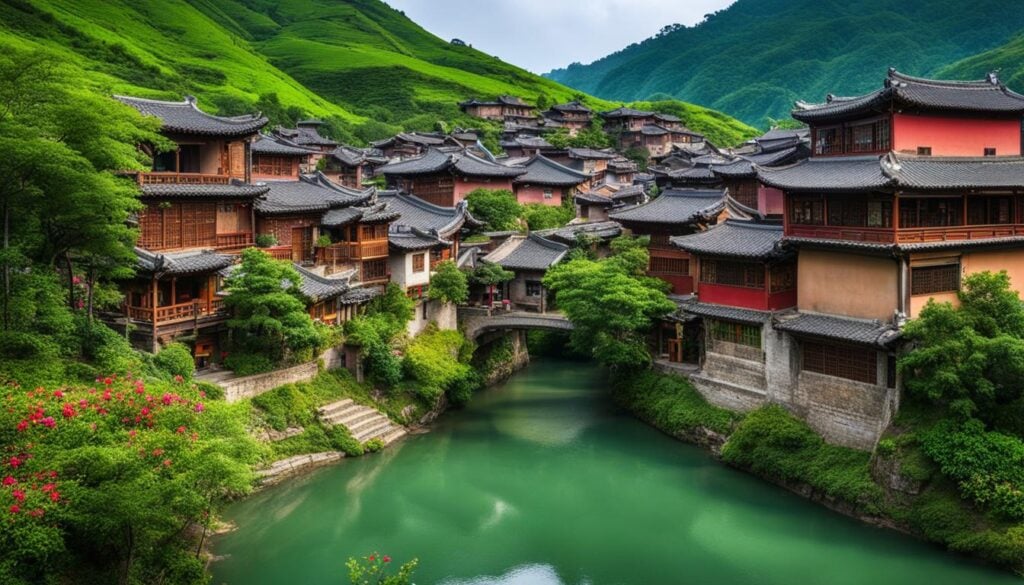Hakka villages are a treasure trove of culture, history, and community spirit. Their stories, traditions, and architecture are a window into a past filled with resilience and creativity. As the tides of modernity sweep across Taiwan and beyond, preserving the local memory of Hakka villages becomes increasingly urgent.
This task is not just about saving ancient structures or reviving traditional festivals. It’s about remembering who we are, honoring the struggles and triumphs of those who came before, and passing on an enduring legacy to future generations. In this blog, we’ll explore the importance of preserving Hakka heritage and the efforts that aim to reconstruct the collective memory of these unique communities.
The Importance of Hakka Memory: A Culture at Risk
The Hakka people, known as the “guest families,” are one of Taiwan’s largest ethnic groups. Their history is defined by migration, resilience, and adaptation, which shaped their distinctive culture. However, Taiwan’s turbulent history of colonial and authoritarian rule has often overshadowed the voices and memories of its indigenous and ethnic communities.
This amnesia has left the Hakka people with fragments of their past. Language loss, cultural assimilation, and urbanization threaten to erase the stories that define their identity. Preserving the memory of Hakka villages is more than a nostalgic exercise; it is a step toward restoring a collective consciousness and strengthening community identity.
Revitalizing Hakka Culture: The Role of Storytelling
The stories of Hakka villages are vivid accounts of family bonds, agricultural innovations, and communal living. They are also reminders of the hardships endured during historical events such as the Taiwan War, the Pacific War, the White Terror, and the February 28th Incident.
Efforts like the “We Remember: Hakka Village Local Memory and Commemorative Form Call for Applications” aim to gather these stories and bring them to light. By encouraging individuals and families to share their narratives, this initiative reconstructs a patchwork of memory that connects past, present, and future.
Storytelling workshops, oral history projects, and community gatherings are vital tools in this endeavor. These activities not only document Hakka heritage but also foster intergenerational dialogue. Younger generations gain a deeper understanding of their roots, while elders find their voices honored and preserved.
The Role of Architecture in Preserving Hakka Heritage
Hakka architecture is one of the most visible manifestations of their culture. Tulou, the iconic round earthen buildings, symbolize the communal lifestyle of Hakka villages. These structures, built with ingenuity and practicality, are physical embodiments of the Hakka spirit.
However, many Hakka architectural gems are at risk of decay due to neglect or urban development. Preservation efforts must balance the need for modernization with the importance of maintaining historical integrity. Restorations, heritage tourism, and community-driven initiatives play a critical role in saving these landmarks.
One promising approach is adaptive reuse, where old Hakka buildings are repurposed for modern functions. By transforming tulou into cultural centers, museums, or eco-friendly accommodations, communities can ensure their relevance while preserving their essence.
Language as the Backbone of Culture
Language is the soul of culture, and for the Hakka people, it is the bridge to their heritage. However, the Hakka language faces a critical threat as younger generations adopt Mandarin or other dominant languages.
Educational programs, media campaigns, and technology-based solutions are instrumental in revitalizing the Hakka language. Efforts to teach Hakka in schools, produce Hakka-language media, and create digital archives of Hakka literature and music are steps in the right direction.
For the Hakka Renaissance to succeed, language revitalization must go hand in hand with cultural and historical preservation.
We Remember: Commemorating Hakka Memory Through Design
The “We Remember: Hakka Village Local Memory and Commemorative Form Call for Applications” is more than just a project—it’s a movement. It encourages creative approaches to preserving Hakka memory, combining art, design, and history.
This initiative invites participants to explore Hakka heritage through various lenses, including visual art, architecture, and interactive exhibits. The goal is to create tangible expressions of Hakka memory that resonate with contemporary audiences while honoring the past.
The design contest serves as a platform for discussion and debate about historical consensus. It challenges us to reimagine the ways we preserve and present local memory, ensuring it remains dynamic and accessible.
A Community Effort: Building Identity Through Collective Memory
Preserving Hakka heritage is not the responsibility of historians or academics alone. It is a collective effort that requires the participation of individuals, families, and entire villages.
By rediscovering and reproducing the stories of Hakka people, communities can rebuild a sense of belonging and pride. From organizing local festivals to maintaining ancestral temples, every act of preservation contributes to the reconstruction of local memory.
Digital platforms, like werememberhakka.com, play an essential role in these efforts. They provide a space where Hakka stories, traditions, and histories can be shared globally, connecting diasporic Hakka communities and fostering a sense of unity.
Why Preserving Hakka Villages Matters
Hakka villages are more than historical relics—they are living symbols of a culture that has survived against the odds. Preserving their stories and heritage is about ensuring that future generations have a foundation to build their identity upon.
Every preserved tale, structure, and tradition is a step toward safeguarding the Hakka legacy. It is a testament to the resilience of a people who have faced displacement, cultural erosion, and historical amnesia.
As we continue this journey, let us remember that preserving the local memory of Hakka villages is not just about looking back—it’s about moving forward with a stronger, more inclusive sense of identity. Visit werememberhakka.com to learn more about how you can contribute to this vital mission.
Conclusion
The preservation of Hakka villages is a cause that transcends geography and generations. It is a call to honor the past, celebrate the present, and ensure the future of a vibrant and resilient culture.
By embracing storytelling, revitalizing language, protecting architecture, and fostering community participation, we can ensure that the memories of Hakka villages endure. Together, we can reconstruct the collective memory of the Hakka people and celebrate their invaluable contributions to our shared history.
Read More From Techbullion



































